Emerging therapeutic benefit of platelet-rich fibrin as novel platelet concentrates in tissue engineering
- PMID: 39931451
- PMCID: PMC11807427
- DOI: 10.21542/gcsp.2024.46
Emerging therapeutic benefit of platelet-rich fibrin as novel platelet concentrates in tissue engineering
Abstract
Background: Treating irreversible cardiomyocyte loss following myocardial infarction presents several therapeutic challenges. While cell therapy shows promise as a regenerative treatment for infarcted cardiac tissue, different cell sources vary in their therapeutic potential. Adipose-derived stem cells (ADSCs) have emerged as an attractive option due to their accessibility, but their limited differentiation capacity remains a significant constraint. Recent evidence suggests that injectable platelet-rich fibrin may enhance this process by stimulating the differentiation of ADSCs into cardiomyocyte-like cells. Objective: Analyse the benefit of injectable platelet-rich fibrin to accelerate the differentiation of adipose-derived mesenchymal stem cells into cardiomyocyte-like cells. Methods: This study is a true experimental randomized pos t-test design study. Adipose-derived mesenchymal stem cells were isolated from adipose tissue and expanded in culture through four passages. The characteristics of adipose-derived mesenchymal stem cells were measured by the expression of CD 34-, CD 45-, and CD 105+ using flowcytometry. The samples were divided into 3 groups, i.e., negative control (α-MEM), positive control (differentiation medium) and treatment group (platelet-rich fibrin). The assessment of GATA-4 marker expression was conducted using flowcytometry on the fifth day and troponin was conducted using immunocytochemistry on the tenth day to determine the differentiation to cardiomyocyte. Statistical analysis was performed using Student's t-tests and one-way ANOVA for data that demonstrated normal distribution as verified by the Shapiro-Wilk test. Results: Flowcytometry on GATA-4 expression revealed significant difference on addition of platelet-rich fibrin compared with negative and positive controls (68.20 ± 6.82 vs 58.15 ± 1.23; p < 0.05; 68.20 ± 6.82 vs 52.96 ± 2.02; p < 0.05). This was supported by the results of immunocytochemistry on troponin expression which revealed significant difference between platelet-rich fibrin group compared with negative and positive controls (50.66 ± 7.2 vs 10.73 ± 2.39; p < 0.05; 50.66 ± 7.2 vs 26.00 ± 0.4; p < 0.05). Conclusion: Injectable platelet-rich fibrin accelerates differentiation of adipose-derived mesenchymal stem cells into cardiomyocyte-like cells.
Copyright ©2024 The Author(s).
Conflict of interest statement
The authors declare there are no competing interests.
Figures

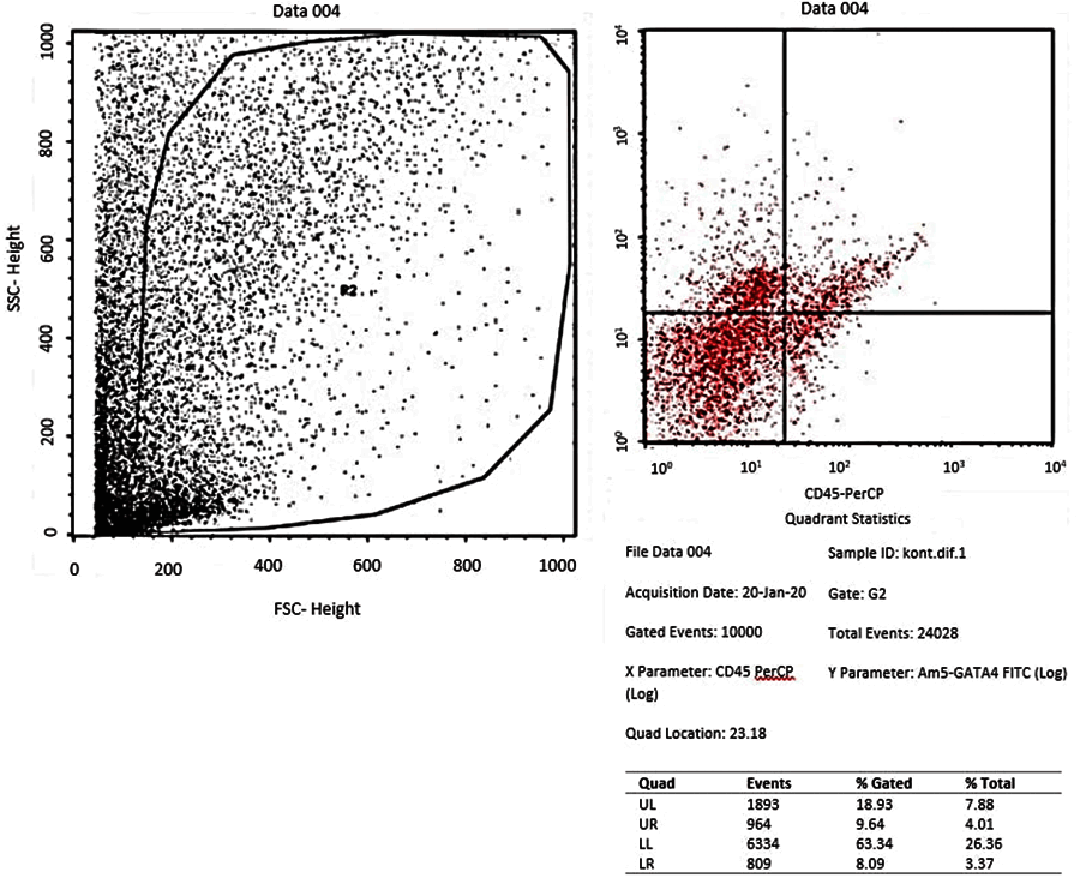
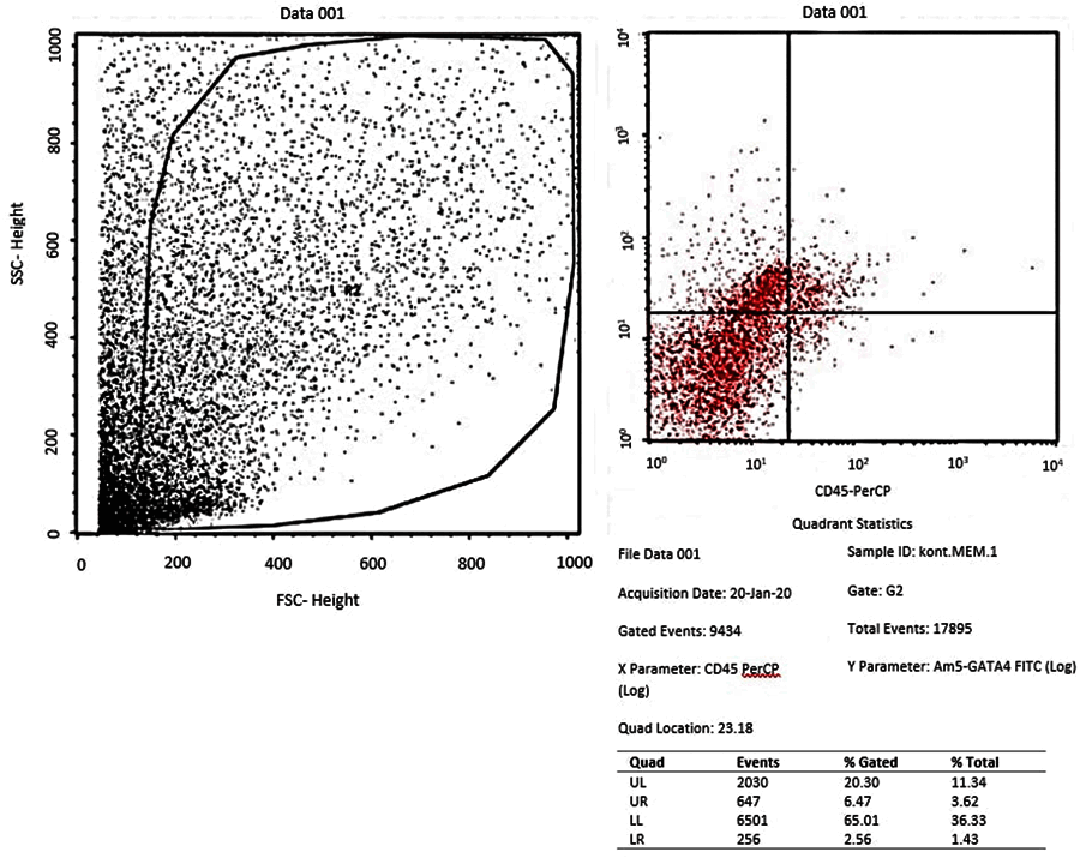
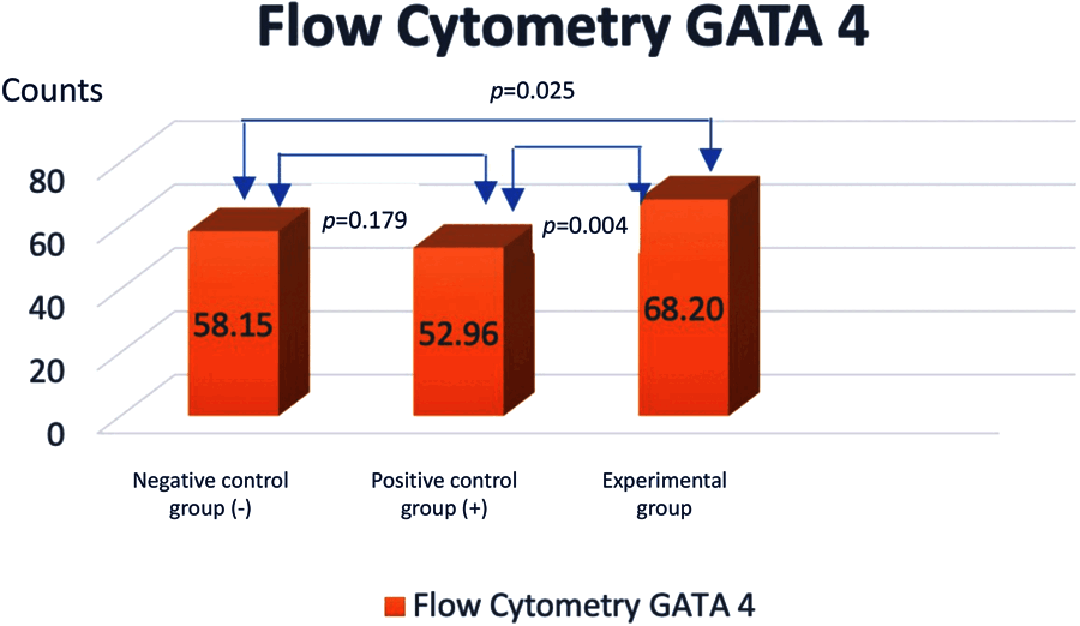
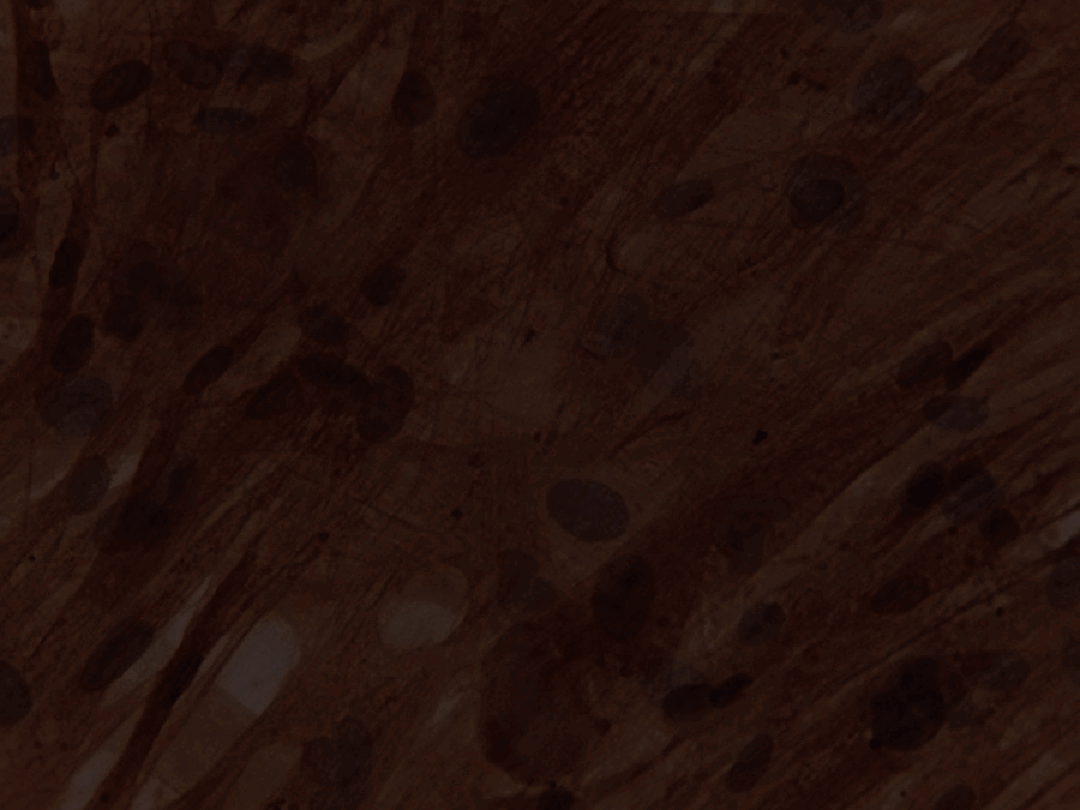

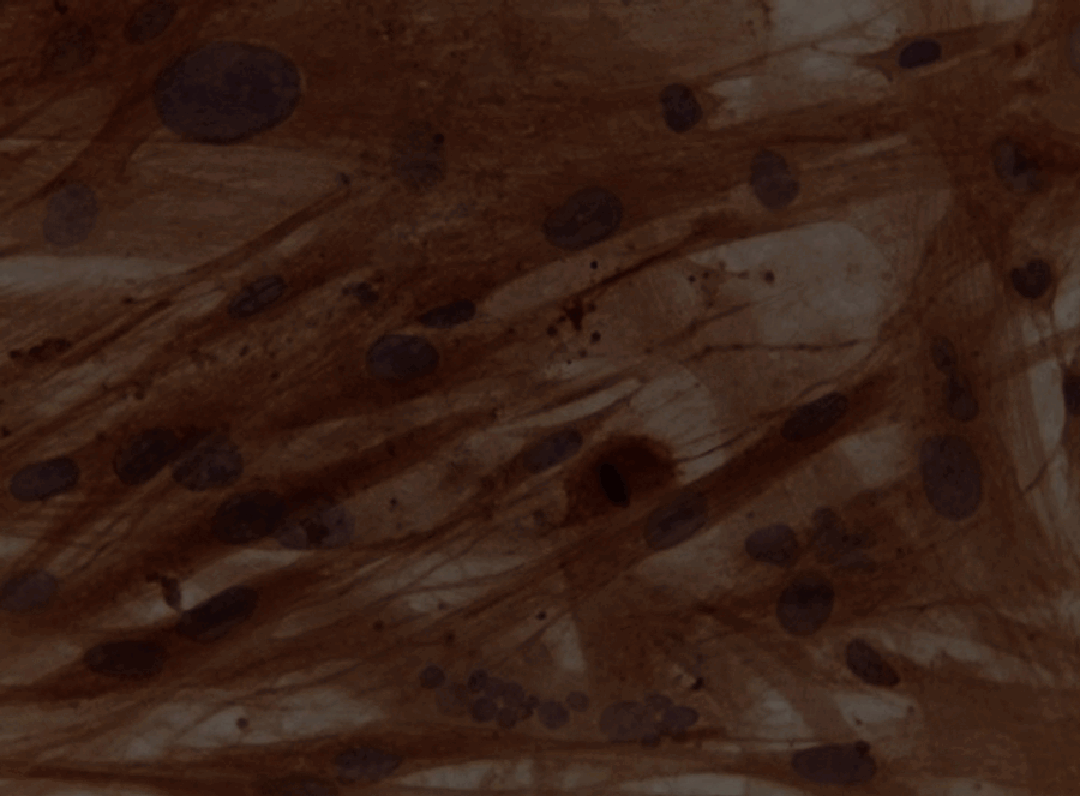

References
-
- Soltani L, Rahmani H, Joupari MD, Ghaneialvar G, Mahdavi A. Effects of 5-Azacytidine on differentiation of ovine mesenchymal stem cells. International Journal of Stem Cell Research and Transplantation. 2015;03(02):96–100. doi: 10.19070/2328-3548-1500016. doi: - DOI
-
- Castro F, Munozledo . The mammalian limbal stem cell niche: a complex interaction between cells, growth factors and extracellular matrix. Switzerland: Springer International Publishing; 2015. pp. 23–56.
LinkOut - more resources
Full Text Sources
